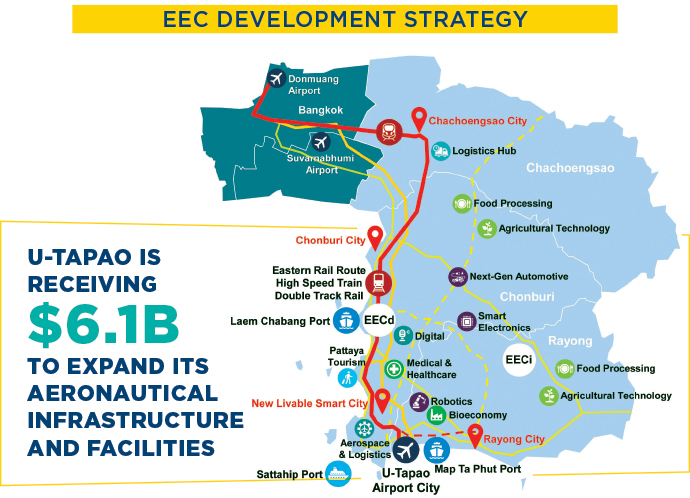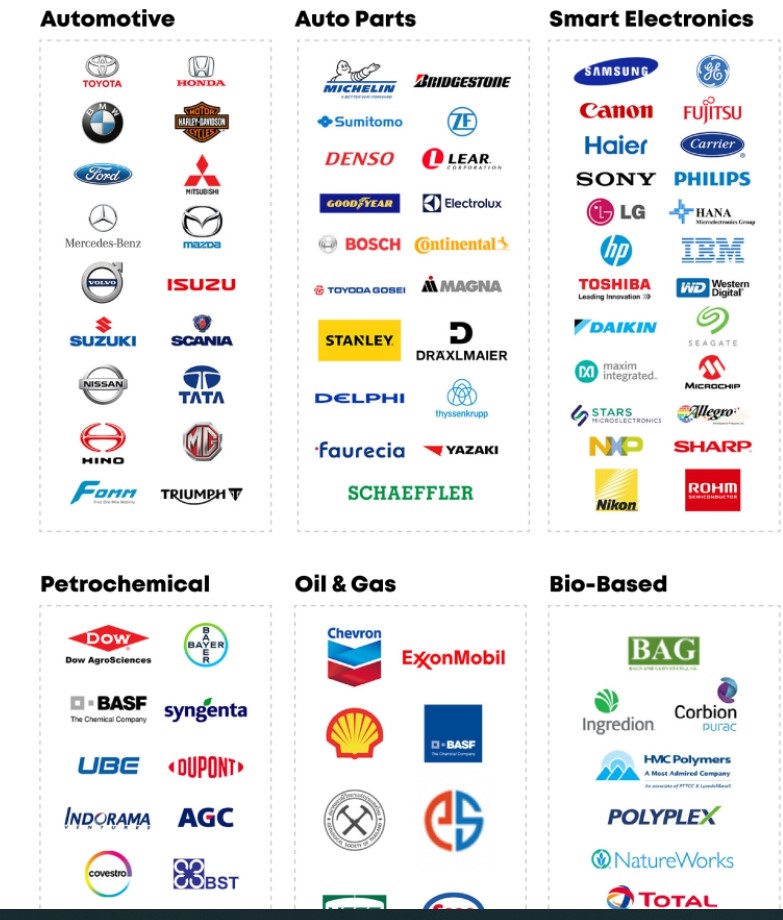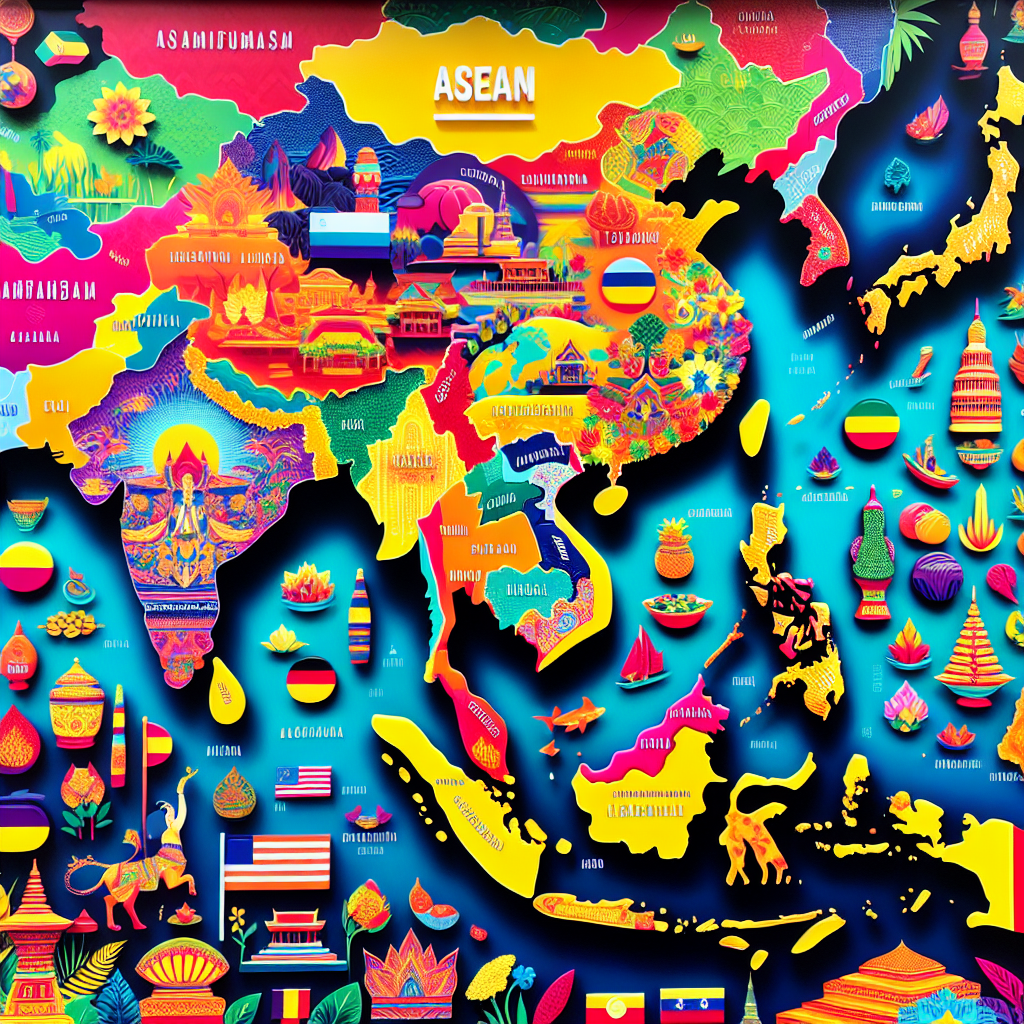At the center of the ASEAN Economic Community, a ten-nation Southeast Asian common market with 671.7 million consumers, is THAILAND, home to 66 million people. In Southeast Asia, its economy ranks second.
According to IMF estimates, Thailand’s GDP per person was projected to reach US$23,708 in 2024 based on purchasing power parity (PPP). Thailand’s world-class air, land, sea, and rail transportation infrastructure makes it easy to access the powerhouse economies of nearby China and India, in addition to its excellent connections with the rapidly developing CLMV (Cambodia, Laos, Myanmar, and Vietnam) countries.

In terms of total cost effectiveness, Thailand is a great value because it has good digital connectivity, a highly skilled labor force, and an exceptional standard of living. Thailand is the region’s top investment destination because of these elements as well as the government’s extensive policies and financial incentives.
TRADES INSIGHT
As the world’s main supplier of food and agricultural products, such as rice and natural rubber, Thailand is one of the leading export centers in the ASEAN area. According to figures from the Commerce Ministry, in 2023, Thai exports were US$284.6 billion, a little decline of -1.0% from the previous year, while imports fell by -3.7% to US$289.8 billion. In 2023, Thailand’s top five export categories included automobiles, auto parts and accessories, automatic data processing equipment, jewelry and precious stones, rubber goods, and refined fuels. From largest to smallest, Thailand’s top ten trading partners were the United States, China, Japan, Australia, Malaysia, Vietnam, Hong Kong, Singapore, India, and Indonesia.
POSITION & ACCESS TO MARKET
Thailand has outstanding rail, road, river, and aviation transportation infrastructure that connects it to the rapidly expanding CLMV sub-region. Companies having headquarters in Thailand can tap into a 66 million-person local market, of which 52 million are middle-class customers. In addition, there are 175.28 million customers in the CLMV region within 1,000 kilometers, 671.7 million consumers in ASEAN within 3,000 kilometers, and 4.77 billion consumers in all of Asia within 5,000 kilometers.
Thailand’s logistics systems are developing quickly and receiving ongoing national investment, which is assisting in the integration of the nation’s transportation network with those of other emerging economies. Thailand is a great place to invest because of the numerous opportunities this presents for international trade and investment.

Thailand benefits from nearly tariff-free commerce with eighteen countries, including important global economies like China, New Zealand, South Korea, Australia, and the ASEAN region. 14 FTAs have been signed by Thailand. The Regional Comprehensive Economic Partnership (RCEP) deal, which covers almost one third of the global economy and people, was ratified by Thailand in 2021. The agreement will formally go into effect on January 1, 2022.
THE DIGITAL STRUCTURE
With its emphasis on the Thailand 4.0 economic model, which aims to advance the nation past earlier economic development models that focused on agriculture (1.0), light industry (2.0), and advanced industry (3.0), the Thai government has been highlighting its digital development for a number of years. Its goal is to make Thailand a digital economy that is “value-based.” Thailand 4.0 aims to achieve economic growth, social well-being, environmental protection, and a rise in human values. Regarding digital infrastructure, this has resulted in significant technological advancements, especially with regard to broadband access and smartphone compatibility. Thailand has committed Bhat 15 billion to the establishment of a nationwide village broadband network, which will offer over 25,000 villages in the country access to reasonably priced high-speed internet.
Digital Park Thailand, situated on 284 acres in Chonburi province on the country’s eastern coastal shore, is another significant development project. By simplifying access to the landing station, data center, and undersea cable system, the park promotes economic development. The Software Park Thailand was also established by the National Science and Technology Development Agency (NSTDA) in Nonthaburi to support and enhance the competitiveness of Thailand’s software entrepreneurs. This is achieved through the promotion of technology transfers, the provision of IT professional training courses, the facilitation of local and international collaborations, and the provision of office space and meeting rooms for software companies.
Improved incentives have also been instituted by the Thailand Board of Investment (BOI) in an effort to stimulate increased investment in R&D and human resource development (HRD) as well as to draw in more capital for the developing semiconductor and digital industries.
ECONOMIC CORRIDOR EASTERN (EEC)
The Thai government is now working on the Eastern Economic Corridor (EEC), a flagship megaproject that seeks to become the ASEAN’s leading economic zone for industrial, infrastructure, and urban development. This project builds on the success of the Eastern Seaboard. With designated areas that span over 13,000 sq.km across the three provinces of Rayong, Chachoengsao, and Chonburi, the Eastern Economic Corridor of Innovation (EECi), Digital Park Thailand (EECd), Thammasat Integrated Medical Innovation Center (Pattaya) (EECmd), and other promoted industrial estates/zones are all part of the EEC. About US$ 50 billion in combined public and private investment projects are anticipated in the EEC over the course of the first five years. The investment climate in the European Economic Community (EEC) offers a plethora of tax and non-tax advantages in order to bolster innovation-led enterprise.

INDIVIDUAL BUSINESS EXPENSES
Bangkok, the capital city of Thailand, offers excellent value for prime office space. Bangkok’s cost is about half that of Ho Chi Minh City, only 40% that of Seoul and Singapore, and a quarter that of New Delhi, Tokyo, and Beijing when compared to other major cities in the region. For a workforce with this level of education and training, wages are also very fair. Thailand has one of the lowest rates of pay inflation in the ASEAN, despite rising wages due to economic expansion throughout the region.
As part of its overall strategy to become a regional leader in ASEAN, the Thai government is committed to capacity building in human resource development, particularly in Science, Technology, Engineering, and Mathematics (STEM) education, in addition to capital infrastructure. Thailand’s Ministry of Education is hosting the first two SEAMEO regional centers for STEM education and Sufficiency Economy Philosophy for Sustainability in collaboration with the Southeast Asian Ministers of Education Organization (SEAMEO).
The government has also developed a wide range of programs for vocational education, such as Talent Mobility (TM), Cooperative Education, Work-Integrated Learning (WiL), Dual Vocational Education and Training, and others, to make sure that the workforce in Thailand is prepared for the demands of the future, particularly in fields like robotics, automation, and artificial intelligence.
THE INTERNATIONAL COMPANIES’ SECOND HOME
Given its many benefits as a regional economic hub, it is not surprising that Thailand has developed into a hub for large industries’ supply chains as well as a second home for many multinational enterprises. Simplifying government regulations, expanding domestic markets, and easy access to resources like capital and technological know-how have made it possible for these international investment operations.



